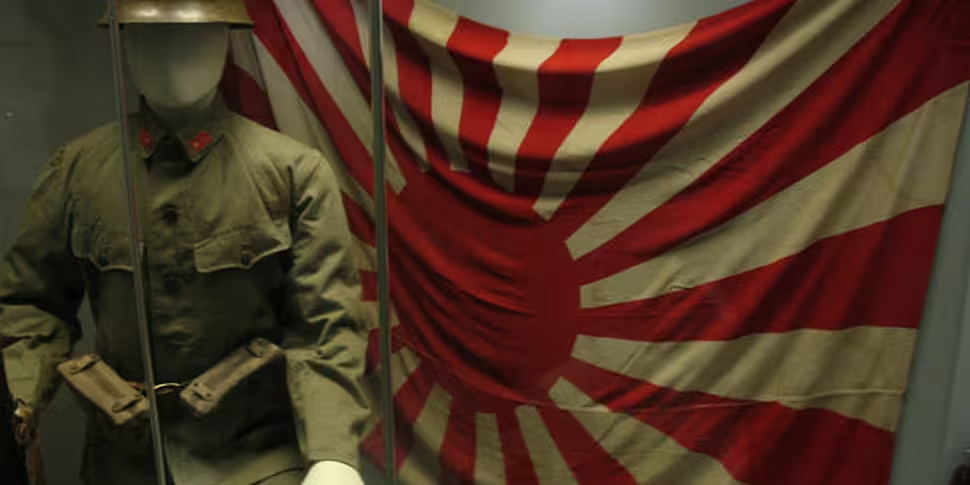In 1842 the ancient fortress nation of China began to be cracked open. For centuries this giant nation had barred her boarders against foreign barbarians. Britain’s victory in the First Opium War, however, foisted the first of the so-called ‘unequal treaties’ on China, forcing her to open up to foreign trade and diplomacy. This conflict provided the blueprint by which the isolationist nations of the Far East would be dragged into the modern world and the global trade economy.
In 1853 this forced transition arrived at Japan when US Commodore Matthew Perry sailed his squadron of four ships into Tokyo Bay. Perry ignored the Japanese demands that he leave and instead began to shell buildings in the harbour. Relenting in the face of superior technology the Japanese allowed Perry ashore to deliver a letter from US President Millard Fillmore. Leading a mission with the express aim of establishing diplomatic and trade relations in the Far East Perry’s promise to return the following year carried an obvious threat; open your borders or face invasion.
In 1854 Perry returned and the Treaty of Kanagawa was signed. This proved the beginning of Japan’s entry into the modern world as the forces pushing for modernisation began to gain ground over those who supported the old feudal shogunate. In the end the samurai and their shoguns fell and a new Japanese Empire emerged from their embers. This new state began to rapidly industrialise and was soon on the heels of the Great Powers. This meteoric rise would, however, have serious repercussions for Japan’s neighbours and the future of Asia and the Pacific.
 Samurai of the Chosyu clan during the Boshin War period
Samurai of the Chosyu clan during the Boshin War period
The shoguns had governed every aspect of life during their centuries as de facto rulers of Japan. Their fall from power brought an end to the established feudal society and the Japanese culture and state found themselves in a serious state of flux. While the restoration of total imperial power saw control of the government and military quickly centralised around the emperor, recasting Japanese society would be a much greater task. With seclusion at an end, however, whatever form modern Japan was going to take it was going to be strongly influenced by the outside world.
The harsh experiences and unfair treaties meted out by the Great Powers fostered distrust of foreigners in Japan. They also proved the worth of modernisation, however, and the strength of the modern nation state. As a result Japan began to emulate the Great Powers as it reconstructed itself during the latter half of the 19th century. The government promoted economic growth and large scale industrialisation in order to build Japan’s military power and international prestige. The resulting rapid modernisation is one of the most impressive in history, and Japan become one of the leading world powers in a matter of mere decades.
This success wasn’t the result of good economics alone. Nationalism provided the second force that drove Japan’s rapid rise. The restoration of imperial power in the wake of the Boshin War had seen Emperor Meiji regain control of the government and armed forces. In the years of modernisation that followed the office of emperor also become the focal point of Japanese nationalism. Reform saw the emperor enshrined as the head of all armed forces while in education traditional values, which held the state as paramount, were reaffirmed. State Shintoism and the assertion that the emperor was a living god melded nationalism with religion, further promoting the individual’s loyalty to the state and the emperor.
 'The Meiji emperor moving from Kyoto to Tokyo' in Le Monde Illustre February 20, 1869.
'The Meiji emperor moving from Kyoto to Tokyo' in Le Monde Illustre February 20, 1869.
Its harsh exposure to the outside world caused a bizarre marriage of ideals in Imperial Japan. While traditional values and philosophies were promoted across the islands the 1890 Meiji Constitution was heavily influenced by Western institutions and ways of thinking. While this Western influence saw the establishment of Asia’s first Parliamentary government it also saw 19th century ideas on colonialism and empire seep into the political rhetoric in Japan. Though themselves the victims of Western imperialism, Japan determined that strength and prestige lay in international expansion and toward the end of the 19th century began to build their empire.
The first manifestation of this came in August 1894 when the newly modernised Japanese state went to war with China, the traditionally dominant power in East Asia. The First Sino-Japanese War became a six month display of the superiority of the modern state as Japan marched from victory to victory against the more archaic armies of the Qing Dynasty. China was eventually forced to sue for peace and ceded the Liaodong Peninsula, the Penghu, and modern Taiwan to Japan.
A fight over influence in Korea the First Sino-Japanese War saw China’s historically firm grip in the region slip, yet it was Russia and not Japan who reaped the benefits from this. Forced by the Western Powers to vacate the Liaodong Peninsula Japan had to watch as Russia seized Port Arthur, securing a warm Pacific port for its navy and extending its influence in the Manchurian region. Though this sleight deepened Japanese animosity towards gaikokujin they joined Russian and the other European powers in putting down the Boxer Rebellion.
 Troops of the Eight nations alliance of 1900.
Troops of the Eight nations alliance of 1900.
The culmination of decades of Western exploitation of China the Boxer Uprising began as a spontaneous popular uprising against foreigners and Christianity. Empress Dowager Cixi soon allied the imperial forces to the Boxers and public unrest became outright war. Seven European powers sent troops to relieve the foreigners and Christians besieged in Beijing’s Legation Quarter. Japan joined as the final member of the Eight-Nation Alliance who smashed the Chinese forces, committed atrocities across the land, and forced harsh terms and a brutal indemnity on the defeated Qing Dynasty.
Russia, once again, benefited most from China’s woes and expanded its influence across Manchuria in the wake of the Boxer Rebellion. Russo-Japanese relations, already worn thin, were brought to breaking point and in February 1904 the two nations went to war. While they had bested China the Japanese army had yet to be tested against a Western power. A quick succession of victories, at land and at sea, soon proved the worth of Japan’s modernisation, however, and by September 1905 Russia was forced to make peace.
This victory not only proved Japan’s martial ability but also secured its place as a rising world power. Korea was made a Japanese protectorate in the peace of 1905, five years later the peninsula was fully annexed and Japan began its expansion into Manchuria and mainland China. East Asia wasn’t immune to the effects of the First World War, however, and Japan joined Russia, China, and the other Allies in expelling German and Austrian forces from Asia and the Pacific.
 'Japanese troops storm a Russian trench' in Le Patriote Illustré, 1904
'Japanese troops storm a Russian trench' in Le Patriote Illustré, 1904
In the wake of the First World War nationalism across the world exploded. In Europe this manifested most obviously with the rise of fascism and aggressive state expansion. In Japan similar nationalist and racial ideas and rhetoric was used to promote imperialism in the 1930s. This manifested as expansionism in 1931 when Japan used the ongoing Chinese Civil War as an excuse to invade Manchuria and create the puppet state of Manchukuo.
The policy of appeasement that allowed Hitler’s expansion in Europe to go unchecked also impacted in Asia as the League of Nations failed to take any decisive action against Japan’s incursions into China. In the ensuing years Japan continued to push deeper into China, taking more and more territory. In 1937 Japanese troops pushed towards Beijing, pushing the conflict between China and Japan into open war. What became known as the Marco Polo Bridge Incident not only began the Second Sino-Japanese War but it is also seen by many as the first engagement of the Second World War.
At the outset of global hostilities Japan stood as one of the world’s leading powers with one of the most impressive maritime empires in history. How did an isolated feudal state become one of the most technologically advanced and widespread empires in a mere matter of decades? Join us as Patrick talks with a panel of experts about the history of Japanese Imperialism. Join us as we journey back to Asia during the 19th and 20th centuries and trace the rise and fall of Japan’s empire. How did Japan become such a dominant force in Asia and the Pacific? What was life like in the Empire of the Rising Sun? What was the rhetoric in Japan and abroad like? And what impact did Japanese nationalism have on its conduct during the Second World War?









